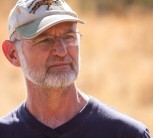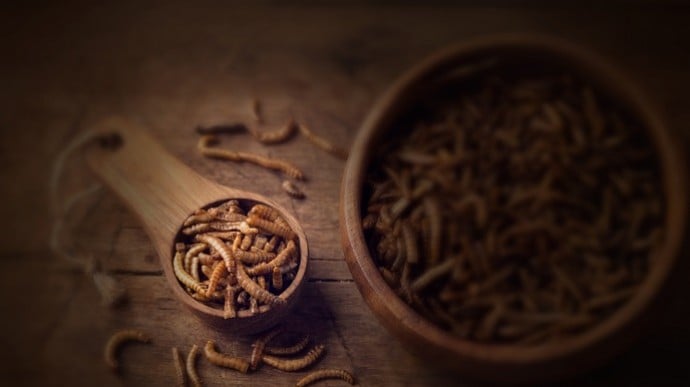New research by scientists at the University of Pretoria (UP) has shown that pulse oximeters, originally designed for humans, can be used more effectively to monitor the blood oxygen levels of rhinoceroses who are under anaesthesia and immobilised – by attaching them at an unusual site: the rhino’s ‘third eyelid’.
“The third eyelid is a crescent-shaped fold of the outer eye structure which forms a thin, semi-transparent ‘blinking’ membrane over the eye,” explains Dr Thembeka Mtetwa, an early-career comparative physiologist of UP’s Faculty of Veterinary Science.
Immobilising rhino for dehorning or relocation is becoming a routine procedure for wildlife veterinarians working on the frontline to protect these animals from poaching. However, during these procedures, the rhino’s lungs and heart may not respond well to the potent immobilising drugs.
“The drugs can negatively affect cardio-respiratory function; this can cause blood oxygen to drop to dangerously low levels,” Dr Mtetwa says.
While the risks are managed as carefully as possible during these procedures, one of the greatest challenges to date has been identifying a reliable, field-friendly means of monitoring the animal’s blood oxygen levels. Monitoring these levels is essential for making important decisions, such as whether to administer drugs to stimulate breathing or to give oxygen to the rhino.
That is why UP researchers have been working to adapt the use of existing technology and testing it in the field to find an appropriate solution.
Up until now, scientists and vets have typically been monitoring the blood oxygen levels of immobilised rhinos with blood gas analysers and pulse oximeters – which are designed for humans, not for a 1.5- to 2.5-tonne rhino – without any certainty of their reliability. Dr Mtetwa explains that these oximeters are not that different to the kind a doctor might attach to your finger to measure your blood oxygen levels. They provide a real-time reading of the oxygen levels in the blood.
“To give the pulse oximeters the best chance of working, we had to think carefully about where to place them on the rhino’s body – where the animal’s skin and membranes aren’t too thick,” Dr Mtetwa says.
The team discovered that the rhino’s ‘third eyelid’ proved to be the most reliable site to attach the pulse oximeter.
“In humans, the third eyelid is that little pink structure snuggled in the corner of your eye that is barely noticeable – it is vestigial and has no function,” Dr Mtetwa explains. “But in rhinos, it is, of course, much larger, and it contains lots of small blood vessels. It’s also quite noticeable in dogs, cats and other animals; it functions to protect and clear the eye of foreign bodies when it closes, and to help keep the eye moist.”
The new research by Dr Mtetwa and her collaborators – UP’s Professor Leith Meyer, a wildlife vet and physiologist; experimental physiologist Prof Ned Snelling; wildlife vet Dr Peter Buss of SANParks; wildlife vet Dr Annette Roug; and ecophysiologist Dr Ashleigh Donaldson – was recently published in the journal BMC Veterinary Research. The group tested the reliability of different pulse oximeters at various attachment sites on the body of an immobilised rhino.
Prof Meyer, who has more than 20 years of experience in wildlife chemical immobilisation, came up with the novel idea to test the feasibility of placing the device on the third eyelid.
“The colour, moisture and capillary refill time of the external mucous membranes of the body are good indicators of hydration, circulation and the overall health of the animal, and are typically good sites to place a pulse oximeter probe,” he says. “However, making use of these membranes on a rhino can be challenging due to their thickness and poor accessibility in some locations of the body, like the mouth. That’s why we decided to explore the mucous membranes of the third eyelid as an alternative option. Luckily, it turned out to be a good idea!”
“The great thing about the rhino’s third eyelid is that it is relatively thin,” Prof Snelling adds. “It has lots of blood vessels close to the surface, and it’s easy for vets and vet nurses to access it.”
“Our findings highlight the importance of using appropriate monitoring techniques in large immobilised animals like rhinos, which have unique anatomical and physiological characteristics,” Dr Mtetwa says. “This new research improves our ability to provide care and ensure the well-being of rhinos in the field.”
Click on the gallery in the sidebar to see how the procedure is done.
Dr Thembeka Mtetwa, Prof Leith Meyer, banner and thumbnail photo credit: Zirk Janssen Photography
August 14, 2024

Dr Thembeka Mtetwa holds a BSc in Zoology and Human Physiology as well as an honours degree in Human Physiology from the University of Witwatersrand. She has been doing research at the University of Pretoria (UP) since 2016, when she started out as a National Research Foundation intern. Dr Mtetwa completed her MSc and PhD degrees through UP’s Department of Paraclinical Science in the Faculty of Veterinary Science.
She says that working in this faculty gave her the opportunity to learn about animal physiology, which she found fascinating. It started when she was doing her internship and continues to this day.
“Experiencing the research field as an intern without the added pressure of studying improved my curiosity and learning capacity,” Dr Mtetwa says.
Her research matters, she adds, because it expands our understanding of oxygen transport and oxygen utilisation in the body of not just humans, but other unique species that are able to cope in stressful conditions and with environmental stresses.
“I am interested in looking at the unique blood characteristics of different species, including mammals, birds and fish when exposed to different physiological stresses,” she explains. “My research provides insight into the cardio-respiratory function of different species and will contribute extensively to conservation efforts of endangered species.”
By understanding basic respiratory physiology of different species, Dr Mtetwa says her research will help answer applied research questions that have implications for human health and can help improve our understanding of how the human body reacts to different stresses.
“My research also aims to find ways to preserve the quality and shelf life of red blood cells to facilitate efficient oxygen transport studies of various species of South Africa, while minimising the costs and risks to animal health,” she adds.
As an early-career researcher and within her academic discipline, she would like to start an oxygen transport laboratory in the Department of Anatomy and Physiology at UP. She is initiating collaborative relationships with other research teams in her faculty, at the University of Witwatersrand and Aarhus University in Denmark.
Recent academic highlights for Dr Mtetwa was completing her PhD, establishing her research niche and starting a collaborative project with Aarhus University’s Zoophysiology Department. She will be visiting Aarhus University in the near future to learn laboratory skills and do research on oxygen transport in the white rhinoceros. These laboratory skills will help her to start her own research at UP.
There is more than one person who has inspired her in her research effort.
“Professor Leith Meyer has profoundly inspired me, and my journey in academia and science,” Dr Mtetwa says. “He is a professor, wildlife veterinarian and physiologist at UP and the Director of the Centre for Veterinary Wildlife Research. I first met Prof Meyer as my mentor when I was doing my internship in 2016. He embodies what a true mentor should be. He dedicated time to teach me and get to know me on a personal level. Because of his kindness, I took every opportunity to learn more about the academic and research field in the faculty. As a mentor, supervisor, friend and colleague, he reassured me of my potential despite my shortcomings. He continued to support my research interests and introduced me to some of the best people and scientists who I will work with for a long time to come.
“Another inspiring person is Prof Ned Snelling, a senior lecturer in the Department of Anatomy and Physiology. He’s been instrumental in shaping my academic career and continues to help me realise my full potential. His mentorship has not only equipped me with the skills and knowledge needed to excel in my role, but also instilled in me a lifelong appreciation for the transformative power of mentorship. I am deeply grateful for Prof Edward Snelling’s guidance, wisdom and friendship, and I am looking forward to paying it forward by empowering others in their own academic journeys.”
Yet another role model for Dr Mtetwa is Prof Tobias Wang, Head of the Department of Biology at Aarhus University, an extraordinary comparative physiologist and editor of the journal Acta Physiologica.
“His research is broad, from working on the physiology of the heart of different species, including the reptilian heart, to the digestion of snakes and oxygen transport of different species,” Dr Mtetwa explains. “The type of research he does is the same research I am interested in. Apart from his amazing reputation in science, he is an amazing human being who is fun, kind and passionate about supporting early-career researchers. Every time I listen to his talks, my eyes light up and I remember why I love science and why I want to be a comparative physiologist.”
Dr Mtetwa hopes to lead an oxygen transport laboratory, and mentor, supervise and inspire other female black scientists.
“Overall, I want to contribute significantly in the field of comparative physiology and contribute positively to medicine.”
Her advice to school learners or undergraduates interested in her field is to remember that the sky is not the limit.
“The only thing that will ever limit you is you,” Dr Mtetwa says. “Your success depends on the objectives you set for yourself. Secondly, science fosters creativity, imagination, curiosity and impact. If you want to live a happy and healthy life, live a life that allows you to continuously learn and make an impact in society – science does just that. Furthermore, if you want to succeed in this field, you need to understand that it is the journey that is important, not the destination. You’ll have to study for many years, so learn to be patient and find ways to enjoy the process, because you will see the results of your education only at a later stage. You should also be positive and kind, because that will help you meet the best people, who will have a significant impact on your life.”
Her hobbies include running, painting and attending concerts to listen to her favourite African soul and Afro-soul jazz artists like Bongeziwe Mabandla, Mandisi Dyantyis, Zoë Modiga and more.

Professor Leith Meyer has been doing research at the University of Pretoria (UP) for 12 years. He completed his undergraduate studies at UP’s Faculty of Veterinary Science in 2000, and joined the University of the Witwatersrand in 2003 as a lecturer in physiology. After two years, he was appointed as a research officer in Wits University’s Brain Function Research Group at the School of Physiology. During that time, Prof Meyer became particularly involved in the group’s research on wildlife environmental physiology and the consequences of game capture. In 2010, he obtained a PhD from Wits that focused on the reduction of the side-effects of capture.
Through his research, Prof Meyer aims to improve the welfare and conservation of various wildlife species. Within his academic discipline, he leads research that seeks a better understanding of the physiological consequences of veterinary management procedures, particularly when animals are captured, translocated, reintroduced into a habitat, rehabilitated or anaesthetised.
“Wildlife vets and managers play a key role in conservation programmes; my work helps these professionals to improve the health and welfare of wildlife species when they work with them,” Prof Meyer says. “My primary research interest and focus is to find novel ways of reducing the side-effects of wildlife capture, anaesthesia and translocation to improve animal health and welfare. We are working on several studies involving a number of different wildlife species, with a focus on rhinos.”
A recent highlight of his research was the discovery that one of the key drugs used to dart wildlife, especially rhinos, causes the activation of the animal’s stress pathways. This activation negatively affects these animals by making them hypermetabolic and hinders oxygen from entering their bodies through the lungs.
“We recently started a study to test novel drugs that can block these effects, with initial promising findings,” Prof Meyer explains. “We’re hoping to discover ideal drug combinations that can best prevent these adverse effects and make capture and anaesthesia safer for wildlife.”
He hopes that his work will have a positive impact on conservation, and improve the way in which wildlife vets handle and look after wild animals in the face of rapidly declining biodiversity. The changes in the world are making the conservation of nature challenging, with human interventions becoming more and more important, he adds.
Prof Meyer’s advice to school learners or undergraduates who are interested in his field is to stick to their dreams if they are passionate about becoming a wildlife vet and making a difference.
“It is an exciting and important field to be involved in, but hard work, dedication and commitment are required.”

Dr Edward Snelling did his undergraduate studies at the University of Adelaide, Australia and joined the University of Pretoria’s Faculty of Veterinary Science in February 2019.
His research is at the interface of experimental physiology, biomechanics and biochemistry. He uses models from Africa and Australia to study resting and locomotor energetics, respiratory and cardiovascular performance, muscle and skeletal systems, and thermoregulation in mammals, birds, fish, and insects. More information here -> www.edwardsnelling.com
 Story
Story
Cricket à la king? How about a yellow mealworm burger? Foods that may previously have evoked a ‘yuck’ response are now firmly on the menu. Research into edible insects by the Department of Zoology and Entomology at the University of Pretoria (UP) is exploring how to rear and harvest this food of the future.
 Story
Story
Generative artificial intelligence (GenAI) is changing how we work, play and relax. Whether you use ChatGPT to write a brief, Midjourney to generate visuals or MuseNet to create unique soundtracks, these technologies have opened up opportunities for richer content.
 Story
Story
A single query to ChatGPT uses as much electricity as burning a light bulb for about 20 minutes. Multiply that by the millions of requests that this artificial intelligence (AI) chatbot receives each day, and the environmental impact is ominous.
Copyright © University of Pretoria 2025. All rights reserved.
Get Social With Us
Download the UP Mobile App